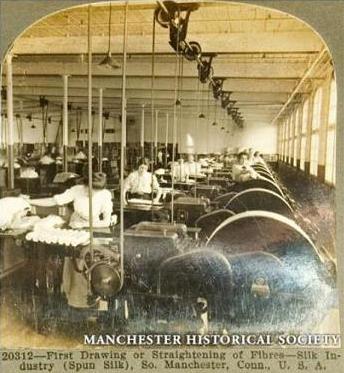



So. Manchester, Conn., U.S.A.
After the combed silk has been received from the dressing machine, and has been carefully inspected, it is then passed through the first drawing machine, which combs and straightens the fibres. This machine has a number of plates of needles which act as combs. These combs will pull out and straighten the fibres. As the fibres leave the machine they are run evenly on the surface of the drum seen at the right, from which they are removed and rolled up in small rolls. A long line of these drawing machines all busily engaged in the drawing process are here shown. As this Connecticut factory is but one of many in the United States, we can begin to form some idea of the magnitude of the American Silk Industry.
Besides furnishing the greatest supply of genuine mulberry silkworms, China is the home also of the best known moths which produce wild silk. The Chinese tussah moth is the most important species of the moth family called Saturnidae. This family of moths is rather beautiful and very extensive, and they yield the wild silks that have been most extensively used. The Chinese tussah worm feeds on oak instead of mulberry leaves. This worm is really a native of Mongolia and it is from this section that Europe receives most of its imported tussah silk. India, however, produces a tussah moth closely allied to the Chinese moth. The Indian tussah moth feeds on cherry trees and other plants.

 )
)